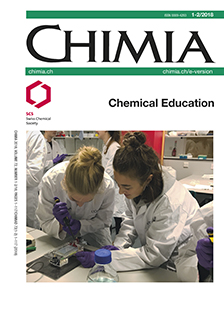Teaching Fundamental Aspects of Natural and Artificial Photosynthesis in Higher Education
DOI:
https://doi.org/10.2533/chimia.2018.16Keywords:
Biomimetic, Electron transfer reactions, Excited states, Photosystems i and ii, Reaction mechanisms, Water oxidation and reductionAbstract
Photosynthesis or the storage of solar energy in chemical bonds is a process which, in its essence, goes far beyond a conversion of CO2 and water into dioxygen and glucose or other organic products. Photosynthesis is a process which comprises elementary features of most of the chemical reactions and some physical processes we are looking at in higher education; light absorption, proton transfer, redox reactions and making and breaking of bonds amongst others. Metals and main group elements are involved and the entire process is embedded in a biological environment that involves proteins and membranes. In this article, we will focus on two key aspects of natural photosynthesis, namely the absorption of light (photons) and the separation of the excitons into electrons and holes based on P680 along with the electrochemical energetics. Further, we will present an artificial light driven catalytic process which mimics PSI for the reduction of water to H2, the inorganic congener of nicotinamide adenine dinucleotide phosphate (NADPH). This light-driven reductive process shall show the mechanistic complexity of the 'easy' reaction 2H+ + 2e– ? H2.Downloads
Published
2018-02-01
Issue
Section
Scientific Articles
License
Copyright (c) 2018 Swiss Chemical Society

This work is licensed under a Creative Commons Attribution-NonCommercial 4.0 International License.
How to Cite
[1]
U. Leisinger, U. Leutenegger, R. Alberto, Chimia 2018, 72, 16, DOI: 10.2533/chimia.2018.16.







